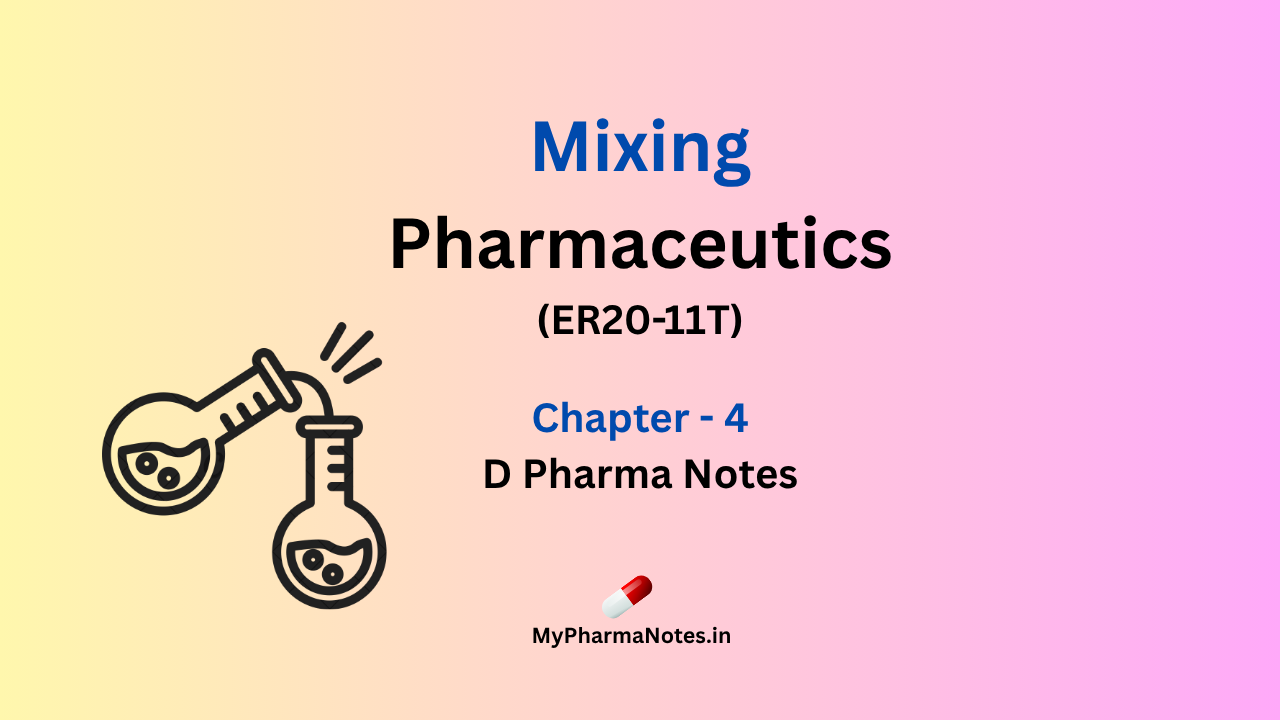Table of Contents
Mixing
- Mixing is defined as a process that tends to result in a randomization of dissimilar particles within a system.
- Mixing refers to the random distribution into are through one another of two or more separate phases.
- Some of the mixing operations in the dispensing practice are spatulation, trituration, tumbling, geometric dilution etc.
Agitation
- Agitation refers to the induced motion of a material in a specified way, usually in a circulatory pattern inside a container.
- The term mix means to put together in one mass or assemblage with more or less through diffusion of the constituent elements among one another.
- The term blending means to mix smoothly and inseparably together. During blending minimum energy is imported to the bed.
Factor influencing mixing process
- Nature of surface.
- Density of the particles.
- Particle size and shape.
- Particle charge.
- Proportion of materials.
Mechanism of mixing in Solids
- Convective mixing- It is achieved by the inversion of the powder bed using blades or paddles or screw element. A large mass of material moves from one part to another. Convective mixing is referred to as macro mixing.
- Shear mixing- In this type , the forces of attraction are broken down so that each particle moves on its own between regions of different composition and parallel to their surface.
- Diffusive mixing- It involves the random motion of particles within the powder bed, there by particles change their position relative to one another. Diffusive mixing is referred to as micro mixing.
In Solid-solid mixing operation four steps are involved
- Expansion of the bed of solids.
- Application of three dimensional shear forces to the powders.
- Mix long enough to permit true randomization of particles.
- Maintain randomization (no segregation after mixing).
Equipment used for solid Mixing- V cone blender, Double cone blender, Ribbon blender, sigma blade mixer etc.
Mixing of Liquids
Liquid-liquid mixing
is considered as a simple operation compared to that of solid-liquid mixing. It involves the formulation of a homogeneous system.
According to theories of solutions, liquid mixtures are classified as follows-
- Miscible liquids-Miscible in all proportion. Example- Ethyl alcohol and water.
- Partially miscible liquids-Miscible in one another at one particular proportion. Example: P-cresol and water.
- Immiscible liquids-these are not miscible. Example- vegetable oils and water.
Equipment used for liquid mixing- Propellers, turbines, Air jet mixer.
Mixing of Immiscible liquids
Mixing of immiscible liquids is carried in pharmacy mainly in the manufacturing of emulsions. The equipment used for preparation of an emulsion is known as emulsifier. Generally a fine emulsion can be obtained and therefore, equipment is also known as homogenizer.
- So metimes, the above equipment directly gives fine emulsion. Otherwise, coarse emulsion is subjected to homogenization in the second stage to get fine emulsion by using one of the following- Silverson emulsifier, colloid mill, rapisonic homogenizer.
Mixing of semisolids
Semisolid dosages forms include ointments, pastes, creams, jellies etc. while mixing such dosages forms, the material must be brought to the agitator or the agitator must move the material throughout the mixer.
The mixing action includes combination of low speed shear, smearing, wiping, folding, stretching and compressing. Mixing equipment are also used for preparing tooth paste, pill mass and wet mass for granulation.
Some semisolids exhibit dilatants property that is viscosity increase with increase in shear rates. Therefore, mixing must be done at lower speeds. The speed must be changed accordingly to thixotropic, plastic and Pseudo plastic materials.
Equipment used for mixing of semisolid- Sigma mixer and planetary mixer (Solid-solid mixer), triple roller mill, colloidal mill.
